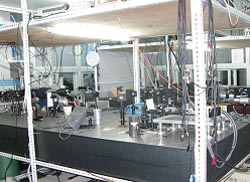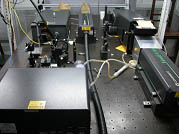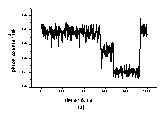
Set-up for ion trap

Setting-up for ion trap
A research team led by Prof. Gao Kelin from the CAS Wuhan Institute of Physics & Mathematics (WIPM) has succeeded in realizing the cold and trapped a few and single ions.
The laser cooling and trapping atom is a feasible approach devoted by physicists to realize the completely static state of an isolated system, creating diverse conditions for preparation of various quantum states of an atomic system and related precision measurement. So far, scientists have made world-renowned accomplishments in this aspect such as the check-up of fundamental physical laws, measurement of physical constants and development of top-performance frequency standards. During the past 15 years, three Nobel Prizes in physics were granted to scientists who had made research breakthroughs in this regard.
A precursor at this research field in China, the ion trap group at the WIPM has done much fundamental work both in the theoretical and experimental studies. As a result of arduous efforts in recent years, they succeeded in overcoming various technical bottlenecks and attained a lot of encouraging accomplishments in laser cooling and trapping a few and single ions, such as the micro-type non-standard Paul trap with a vacuum in the order of 10
-10 Torr., the laser beam optimization and the focusing system and wavelength monitoring system for the 397nm cooling laser (4
2S
1/2−4
2P
1/2) (with a commercial intracavity frequency-doubled Titanium-Sapphire laser or a single-mode direct UV diode laser) and 866nm repumping laser(3
2D
3/2−4
2P
1/2) (with a single-mode diode laser ), also the focusing and measurement systems for weak fluorescence and necessary for Ca
+ optical frequency standard. Of late, the research team succeeded in realizing the trapping and Doppler cooling of a few and single ions determined by observation of the quantum jumps driven the clock transition 729nm (4
2S
1/2−3
2D
5/2) (with the Titanium-Sapphire laser), leading to the construction of China's first experimental platform capable of manipulating single atoms as a feasible tool to study the optical frequencies and quantum states under well controlled condition.

Quantum jumps for two ions







